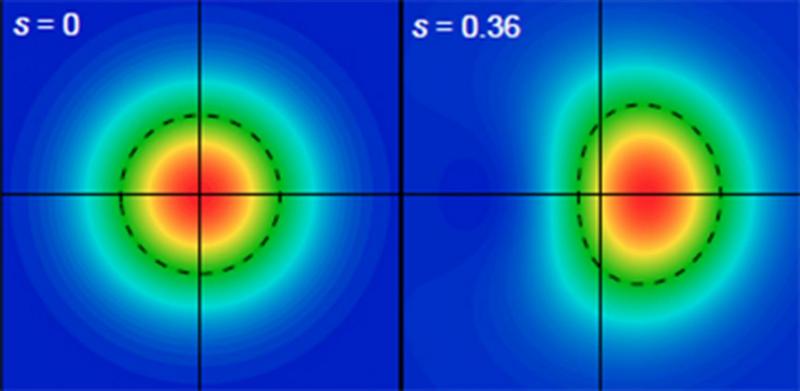Can Light Particles Be Squeezed? A Team of Scientists Says Yes
For the longest time, the idea that light particles cannot be squeezed has prevailed. Physics books the world over don’t mention the existence of an instance of light particle squeezing or are arguing against the possibility of such to happen. However, a group of scientists managed to have successfully “squeezed” light particles and they have the measurements and diagrammatic evidence to prove their claim.
Squeezing?
So what does squeezing mean? Basically, it is an unusual phenomenon of quantum physics wherein a very specific form of “low-noise” light is created. It takes place when electromagnetic noise is lower than what can be observed in the midst of naturally occurring vacuum fluctuations, below the amount referred to as the standard baseline for vacuum fluctuations.
If you are imagining individual photons getting deformed like pinched or squeezed balloons, unfortunately such an image is not what the researchers have to show. Instead of an image of individual photons getting deformed, the best graphical evidence of squeezing the scientists can present is a diagram that represents electromagnetic activity associated with light at its lowest level possible. The diagram appears as multiple layers of perfect circles with varying colors. When squeezing happens, this diagram appears skewed. So, no, the image posted above is not the image of an actual photon getting squeezed, but merely a diagram that represents measurements.
Making Squeezed Light Particles Possible
Squeezing a light particle, as a standard approach, involves the use of an intense laser beam shot at a material that is typically a nonlinear crystal. Squeezing is also said to be possible, based on a more-than-three-decades-old theory called resonance fluorescence, by exciting a single atom with a tiny amount of light. An atom is believed to be capable of scattering light and squeeze its particles in the process.
This technique based on resonance fluorescence is believed to have mathematical basis but for many years, the actual experiment to demonstrate the effect could not be undertaken because it is extremely difficult to observe and there hasn’t been an atom with the ideal properties to make the occurrence substantively observable.
A team of physicists has presented a report on how they successfully squeezed individual photons (light particles). They pursued the idea of resonance fluorescence and created a synthetic atom referred to as a semiconductor quantum dot. This quantum dot is an artificially constructed atom that features enhanced optical properties. Together with the observation system created by the team, the quantum dot enables the clear observation of squeezed light particles as they scatter upon hitting the quantum dot.
![By US Air Force [Public domain], via Wikimedia Commons](https://techtheday.com/wp-content/uploads/2014/04/laser-research.jpg)
[Not the actual image of the University of Cambridge experiment] Image credit: US Air Force [Public domain], via Wikimedia Commons
The idea of resonance fluorescence has been in existence since 1981 but physicists back then thought that it is impossible to see photons getting squeezed due to various limitations. Today, thanks to the existence of optically enhanced artificial atoms, resonance fluorescence can now be demonstrated and observed. According to University of Cambridge Professor Mete Atature, lead researcher of the team of physicists involved in the study, it is now possible to achieve the necessary conditions to be able to observe the squeezing of photons, a bizarre phenomenon that goes against the expectations of physicists.
In the experiment led by Professor Atature, a faint laser beam was aimed at the artificial atom or the quantum dot. As the quantum dot was excited by the laser, a stream of photos were emitted. Normally, the noise associated when photons are emitted is higher compared to that of a vacuum state. However, in the case of the faint laser and quantum dot setup, the noise associated with the emission of photons was measured to be lower than normal. It was found to be less than the expected baseline for vacuum fluctuations. A vacuum fluctuation is a temporary change in the amount of energy in a point in space, wherein the law of conservation of energy appears to have been violated to enable the creation of virtual particle-antiparticle pairs for an extremely short duration.
Applications
Unfortunately, at this point in time, there are no known applications of this new knowledge. According to Professor Atature, their main goal in doing the study is simply to prove the reality of the “squeezing” property of photons, since it has not been observed before. It is just for the sake of furthering the physics knowledge and understanding. The point is simply to know more than what we used to know before. Professor Atature adds that it’s what science is all about, discovering or learning about things because we are curious about them.
